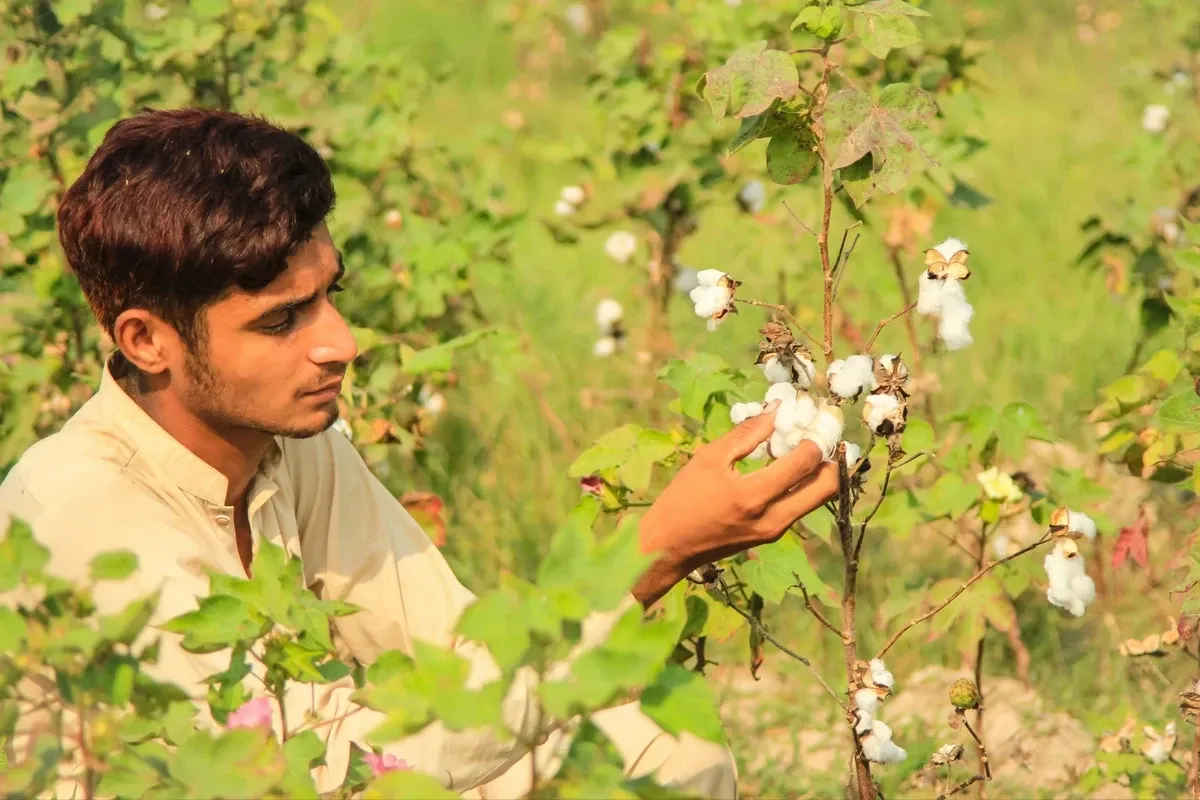Pakistan’s cotton output drops 30% as Sindh production halves
Ginning factories face mounting losses amid unsold stock, miller reluctance, and import surge
Business Desk
The Business Desk tracks economic trends, market movements, and business developments, offering analysis of both local and global financial news.

Pakistan’s cotton production dropped by 30% compared to the same period last year, with only 594,000 bales of raw cotton reaching ginning factories across the country by July 31, according to data released by the Pakistan Cotton Ginners Association (PCGA).
The decline is largely attributed to a record 47% decrease in Sindh’s cotton output, even as Punjab recorded a modest 3% increase.
Ginning factories in Punjab received 302,000 bales by the end of July, up slightly from last year, while Sindh’s factories processed just 292,000 bales, down nearly half from the same period in 2024.
Despite the overall drop, 99,000 bales of the current season’s crop remain unsold in ginning factories, compared to 64,700 bales last year. Textile mills have so far purchased 529,000 bales from ginners.
A total of 268 ginning factories are currently operational—114 in Punjab and 154 in Sindh—compared to 225 during the same period last year, when 120 factories were active in Punjab and 105 in Sindh.
According to Ihsan-ul-Haq, chairman of the Cotton Ginners Forum, the higher volume of cotton being processed in Punjab is partly due to cotton from Sindh and Balochistan being redirected to Punjab, where better prices are being offered.
However, the industry faces mounting challenges. “Heavy rains in recent weeks have negatively impacted cotton quality, which has reduced lint quality as well,” Haq said. “This is discouraging textile millers from making purchases, and ginning factories are incurring major losses.”
As a result, several ginning units in both Punjab and Sindh have begun shutting down operations. Haq warned that if the trend continues, cotton prices may come under further pressure in the coming weeks.
Analysts say the sharp decline in cotton production, especially in Sindh, could affect Pakistan’s textile exports, which rely heavily on domestic cotton supplies.
The government is yet to announce any emergency measures or relief for the ginning sector.
Since the decline in cotton production, textile mills have been importing raw cotton in order to plug deficit and procure quality cotton.
In the last fiscal year raw, cotton worth $1.265 billion was imported while in the previous year, it was around $448 million.
The production trend suggests that Pakistan may import raw cotton worth over $1 billion in the current fiscal year. However, some analysts say the government's decision to impose sales tax on imported cotton and yarn may lead to lower imports.










Comments
See what people are discussing